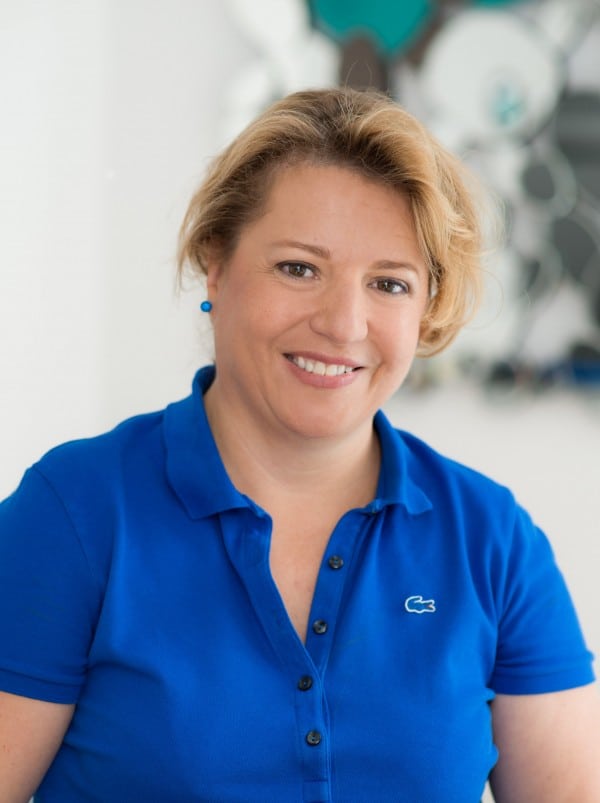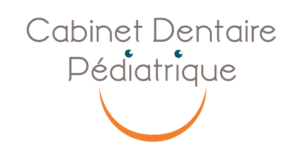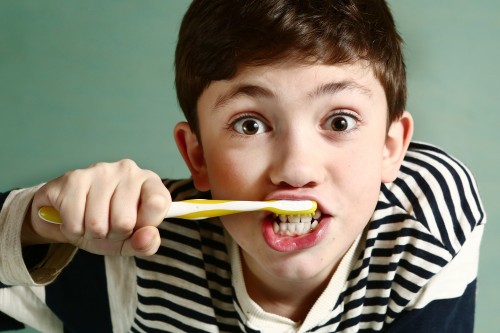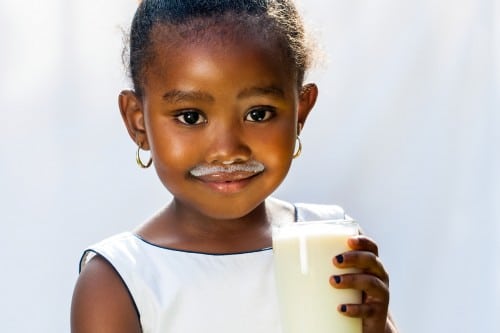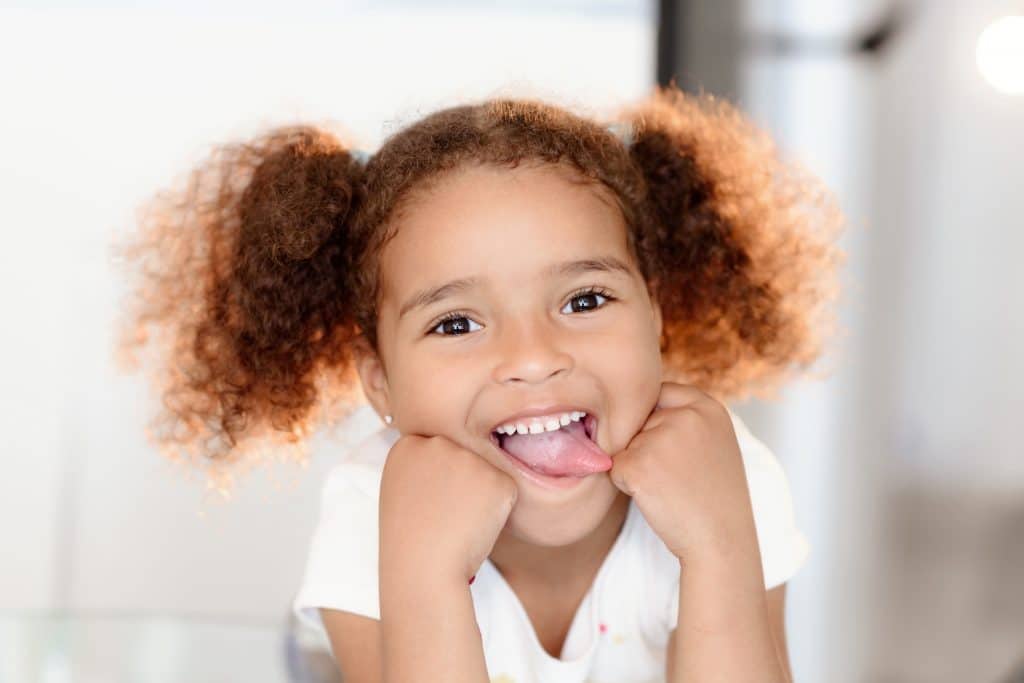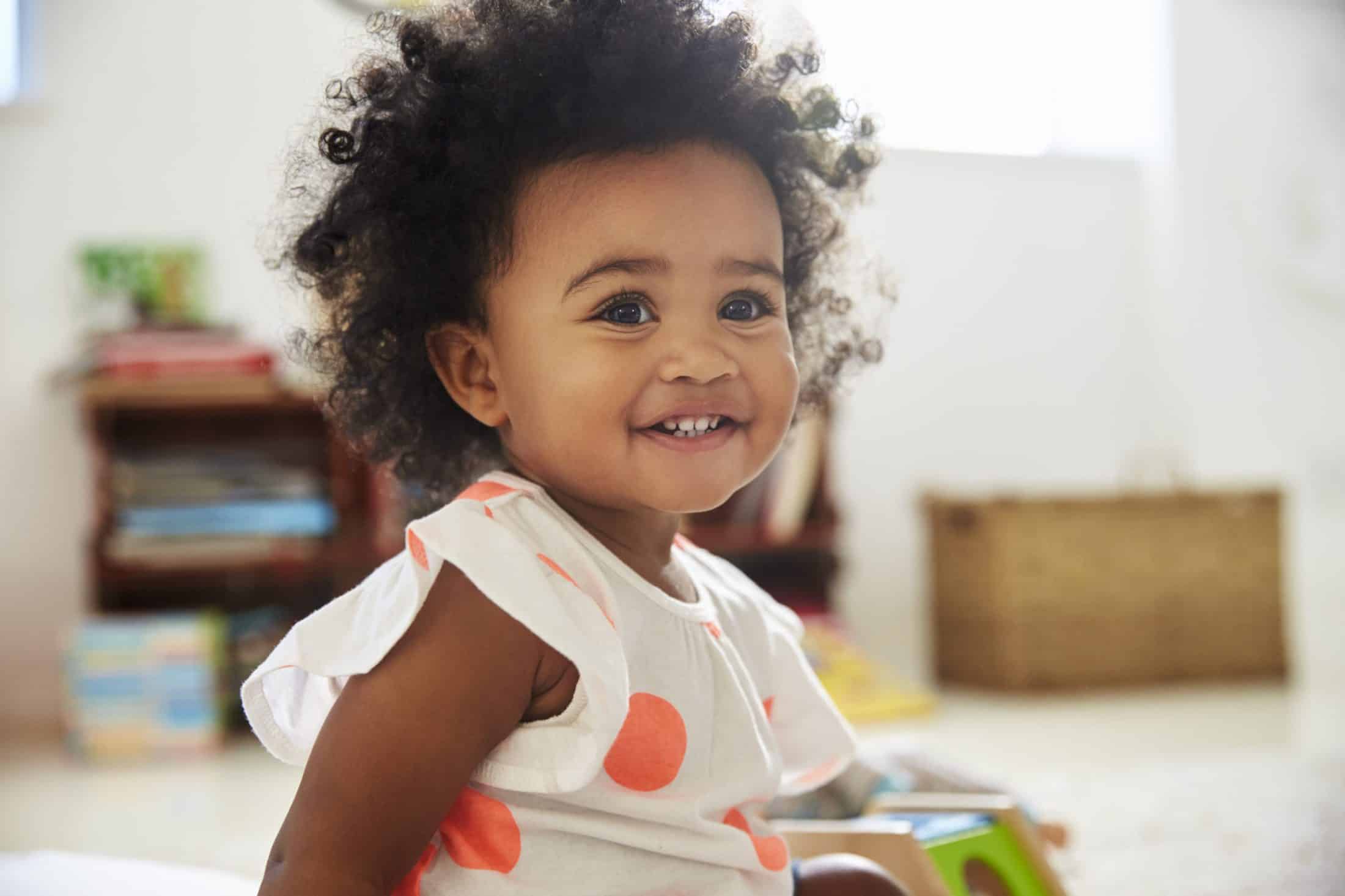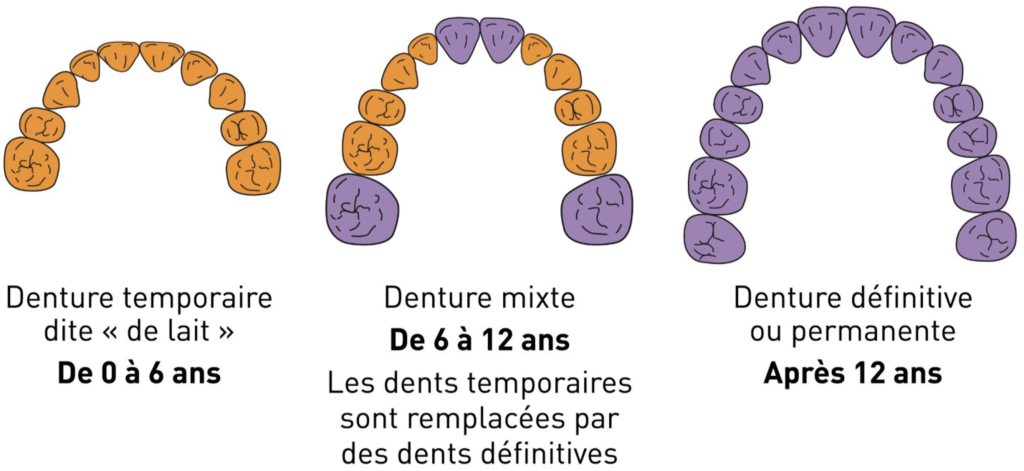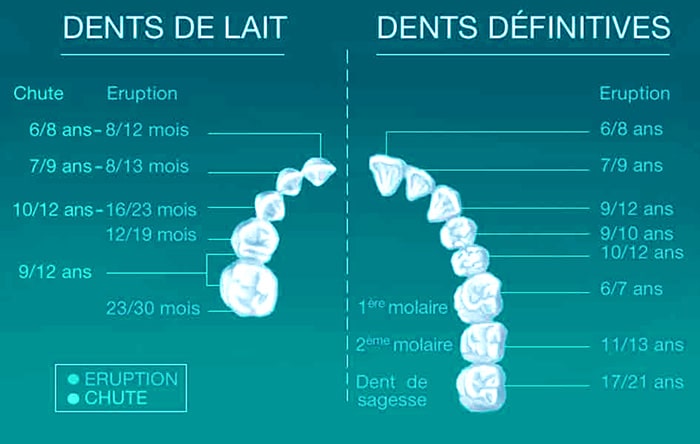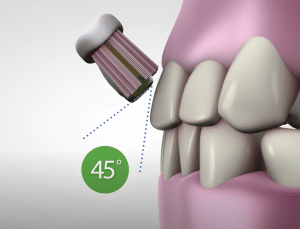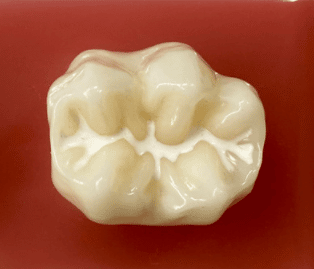You should start brushing your child's teeth with fluoride toothpaste as soon as their first baby teeth appear! The toothbrush itself serves to clean plaque and bacteria, while the fluoride reinforces your child's tooth enamel and prevents cavities.
Pick a toothpaste that has a fluoride concentration specific to your child's age group. Fluoride toothpaste can be found both in the pharmacy and over the counter, and they come in all sorts of flavors! Pick one that clearly indicates its fluoride concentration.
Les autorités de santé recommend toothpaste with a maximum fluoride concentration of 500 ppm (parts per million) for children 2–6 years of age, and 1500 ppm for 7–12 years. But make surethat your child doesn't swallow the toothpaste.
The fluoride present in the toothpaste is sufficient, and additional supplements in the form of drops or pills are not necessary (except when prescribed by a doctor).
6 months - 3 years:
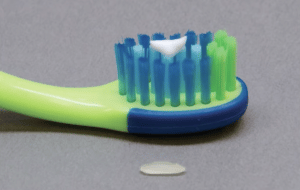 > Parents brush their children's teeth for them with a toothbrush designed for the child's age group.
> Parents brush their children's teeth for them with a toothbrush designed for the child's age group.
> Use a tooth paste with a fluoride concentration less than 500 ppm (parts per million), and apply an amount equal to the size of a grain of rice.
3-6 years:
> Parents should brush their children's teeth for them using an electric toothbrush that performs both rotational and pulsating movements.
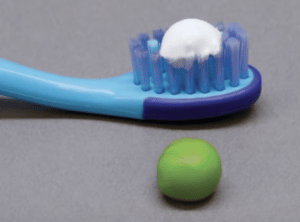
> Your child's toothpaste should have a fluoride concentration of 500 ppm, and be applied in a quantity equal to the size of your child's pinky nail (or a pea!).
Prior to 6 years of age, it’s assumed that children are swallowing some of their toothpaste, and toothpastes for this age group are designed accordingly. Therefore, it’s necessary to be mindful of what toothpaste you’re giving your child and pay attention to fluoride concentrations in order to avoid an accidental overdose.
6 years and older:
Ideally, brushing should be done at least twice a day after meals. Nighttime brushing is particularly important because salivation reduces during sleep, therefore the protection it would normally provide depends instead on your child brushing their teeth before bed to minimize the risk of cavities. After your child brushes their teeth before bed, they shouldn’t eat or drink anything- except water!
> Once children habitually spit out their toothpaste, the ideal fluoride concentration is between 1000-1500 ppm.
